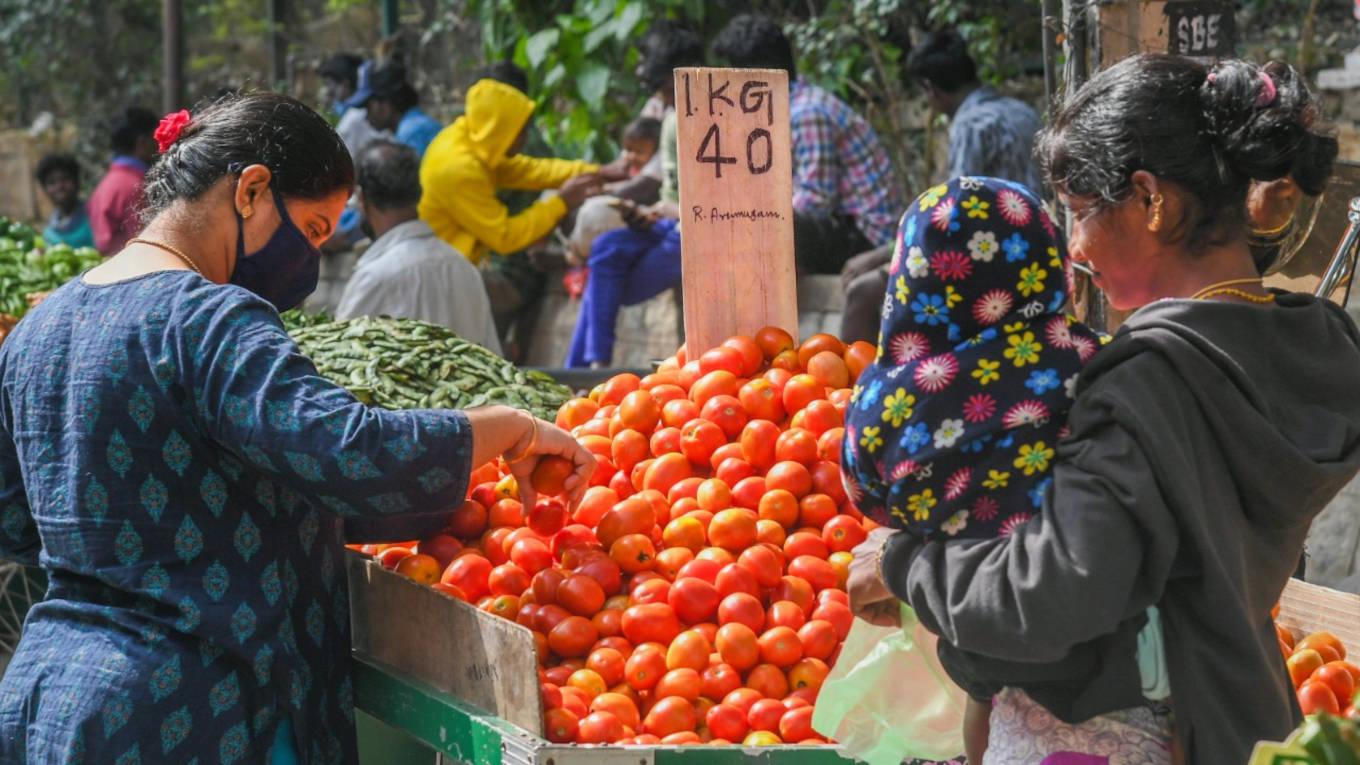-
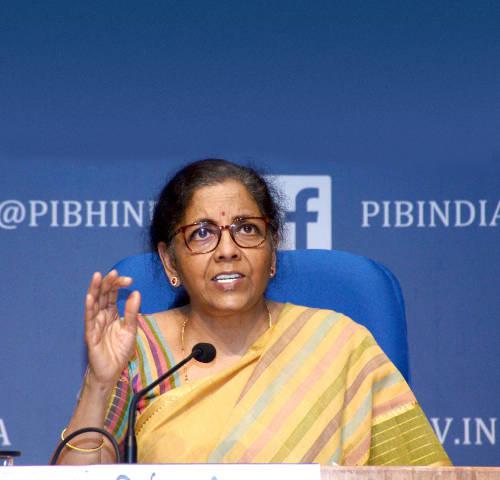
India, with its strong fundamentals, has periodically faced challenges and emerged out of it
NIRMALA SITHARAMAN, Finance Minister
Real and notional
While the Modi government claims that India’s GDP at 8.7 per cent during the last fiscal was the fastest annual growth rate by a major economy, the fact is this jump was expected and came on the back of a 6.6 per cent contraction in the economy (during the largely pandemic-hit 2020-21). The real GDP in 2021-22 is just 1.5 per cent higher than the level in the pre-pandemic year of 2019-20, indicating that the bounceback following the pandemic has only been sufficient to make up for the contraction in the previous year. GDP growth for the four quarters that ended March 2022 were 20.1 per cent, 8.4 per cent, 5.4 per cent and 4.1 per cent respectively. The corresponding numbers for 2020-21 were minus 23.8 per cent, minus 6.6 per cent, 0.7 per cent and 2.5 per cent.
As for the inflation that is at 7.8 per cent (CPI for April 2022) with the Consumer Food Price Index at 8.4 per cent, and Wholesale Price Index at more than 15 per cent, the government claims that it is straining every nerve to get the monster back under control. In an unprecedented move, it has even set up three high-level committees for the purpose.
But there is a growing view that inflation will remain uncomfortably high in the current fiscal despite the Centre’s efforts to tame stubborn price pressure through measures like tax cuts. Even the RBI has raised the inflation forecast to 6.7 per cent for 2022-23 from an earlier estimate of 5.7 per cent. “The upside risk to inflation persists; a recent spike in tomato, crude prices is fuelling inflation,” said RBI governor Shaktikanta Das after the June bimonthly meeting.
Low growth quagmire
To get an idea of where growth is faltering, says Subhash Chandra Garg, former finance and revenue secretary, one needs to go through a simple primer on the economy. The GDP is made up of two basic constituents – gross value added (GVA) of goods and services produced and net taxes on products. The GVA has historically lagged behind the GDP: true to trend, it recorded an increase of 8.1 per cent for 2021-22, against the GDP of 8.7 per cent. Clearly, the gap is being covered by higher yields on taxation.
However, it has been noticed that the GVA growth in the second half of recent years has been around just 4 per cent, crossing 4 per cent only in 2021-22. Even this year, it may barely touch 4 per cent. “Aren’t we in a serious low-growth quagmire?” asks Garg.
According to Rumki Majumdar, Economist, Deloitte India, the difference between the real GDP (that tracks the total value of goods and services by using 2011-12 prices as the base that is adjusted to inflation) and nominal GDP (that does not account for inflation) suggests that inflation has been a persistent problem. In 2021-22, India’s real GDP stood at Rs147.4 lakh crore while the nominal GDP was reported to be Rs236.6 lakh crore. The difference is almost 60 per cent. “Our economy has been fighting the challenge of rising prices for a long time now,” she points out.
Government intervention
As for the government’s intervention in the form of duty cuts on imports, subsidies on fertilisers and cooking gas, duty cuts on fuels to protect consumers and businesses from high inflation, economists like Majumdar feel that it is more likely to impact the fiscal deficit in the coming quarters than anything else. That is not good news as the government needs all the fiscal space it can get to fire the engines of capital expenditure as part of its budgetary strategy to get the economy going.
-
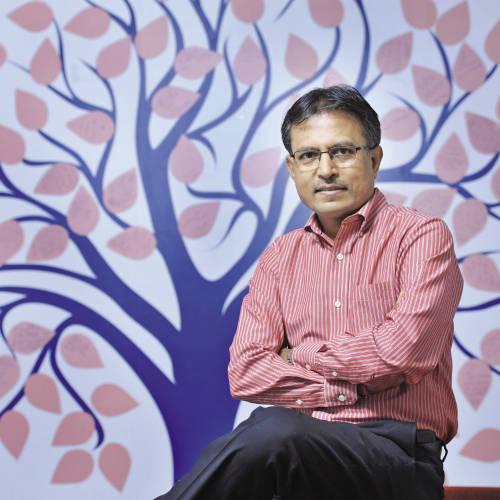
The RBI will require all its skills and a little bit of luck to control inflationary expectations and support growth in the days to come
Nilesh Shah, Member, PM’s Economic Advisory Council
The government has been arguing that while there is no escape from inflation, which is now a global phenomenon, India is still better off than most. “Economies of other big countries are facing steep inflation and the sharpest decline in living standards since World War II. It is a phenomenon. We are in a situation where we can control prices to the extent we can,” claims Hardeep Puri, Union Minister of Petroleum and Natural Gas.
Puri has a point as even the World Economic Outlook of the IMF projects inflation in 2022 at 5.7 per cent for advanced economies and 8.7 per cent in emerging market economies – significantly above their historical average. Piyush Goyal, another heavyweight minister who holds the Commerce, Industry, Food and Public Distribution portfolios, says some things are beyond the government’s control. Tomato prices, for instance, are seasonal. But on most items, inflation is lower in India than the rest of the world.
Rajeshwari Sengupta, associate professor, Indira Gandhi Institute for Development Research, sum up the situation: “India is now facing a dual problem of low growth and high inflation. The recovery has proved much weaker than expected, with growth amounting to a meagre 4.1 per cent in the fourth quarter of 2021-22. At the same time, inflation has been surging so much that over the past few weeks the government has taken a wide range of measures to deal with it. Unfortunately, this strategy is misplaced. The government’s actions will have only a marginal effect on inflation, while they may do significant damage to the incipient recovery. The government needs to step back from the inflation fight, and instead encourage RBI to tighten monetary policy.”
In short, she says that the government’s strategy to control prices through export restrictions is wrong; it also sends the wrong signal to global investors who want to come and invest, so that they can export.
Inflation projections
But it is inflation which affects the political economy more than low growth as it is seen as a form of tax on the salaried class, pensioners and the poor. Elevated inflation hurts economic growth and hits corporate earnings as the middle class and low-income earners cut back on spending to cope with the higher cost of living.
A median of projections by eight brokerages puts inflation at 6.7 per cent in 2022-23, sharply up from the previous year’s 5.5 per cent. Retail inflation surged to 7.79 per cent on an annual basis in the month of April owing to higher edible oil and fuel prices. Headline inflation is now at its highest level since the 8.33 per cent hit in May 2014.
The wholesale price index inflation has inched close to 15 per cent. The pass-through effect of wholesale inflation on retail inflation will soon become more and more evident as producers feeling the pinch of rising input costs pass on the hikes to consumers. Anticipating the upward trend, RBI has already started fiscal tightening by increasing the repo rate.
Officials of the finance ministry believe that the magnitude of the impact of the geopolitical conflict will depend on how long dislocations in energy and food markets persist during the fiscal year and whether India’s economy is resilient enough to somewhat mitigate the impact.
However, in the long run, transient shocks may not have a big effect on real growth and inflation, and the economy may prove resilient owing to the government’s thrust on capital expenditure and improved corporate sector health. This optimism, however, is not shared by private sector economists, who feel that while recession may not be a possibility, growth will remain a challenge.
-
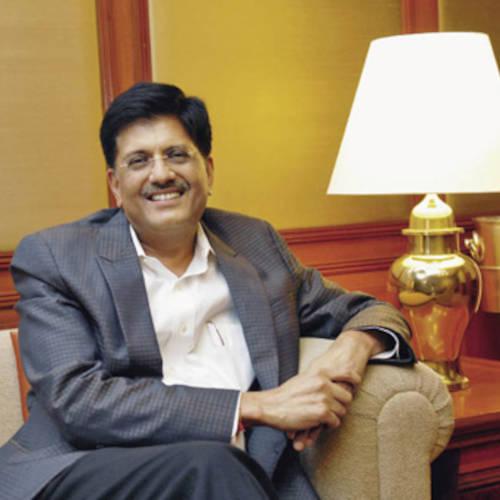
The government is monitoring prices on a daily basis, with a three-tier system of an inter-ministerial group of officials
Piyush Goyal Minister of Commerce, Industry, Food and Public Distribution
Monsoon’s role
Apart from how global crude oil prices behave, the role of the monsoon will also matter. While crude oil prices have risen again recently and could impart volatility to inflation prints, the monsoon is expected to be normal this year. While IMD anticipates the average rainfall this monsoon season to be 103 per cent of the long period average (LPA), Skymet, the private forecaster, expects the monsoon to be ‘normal’ at 98 per cent of the LPA. However, there has been a late start to the monsoon. There is speculation as to when the monsoon will pick up and how equitable the distribution of rainfall will be.
Indian agriculture is highly dependent on the rains for irrigation and employs more than half of our workforce, making up about 15 per cent of economic output. Plentiful rains could help in bottoming out sluggish rural demand. The rise in farm income leads to an improvement in consumption levels, seen in higher sales in sectors like FMCG, tractors and two-wheelers from the auto segment, chemicals, and fertilizers. Indeed, farm-income related stocks were back on the analyst’s radar after the predictions of a normal monsoon.
But though a normal monsoon augurs well for the overall health of the economy and can trigger an increase in demand, analysts caution that the distribution of rain across the country is another important factor to consider. That apart, rising input costs due to geopolitical issues can also trigger a rise in input costs despite a healthy monsoon back home. Indeed, the gorilla in the room is oil prices.
Finance Minister’s hopes
The finance ministry maintains the government is exploring all options, including import diversification, to procure crude oil at an affordable price. But if high international crude prices persist for long, this could hamper economic prospects. Much was made of Russia’s reported offer to India to sell oil at a discount of as much as $35 per barrel on prices before the war.
Since the outbreak of the Ukraine war, Indian state-run and private refiners have significantly raised their intake of Russian oil that’s been selling at a deep discount compared to global benchmarks. But average discounts availed by Indian refiners on a delivered basis have been in the range of $10 per barrel, much lower than what is believed to be availed of by refiners in Europe.
On a free on board (FOB) basis, a combination of shipping and insurance costs (which have sharply risen due to war) and increased traders’ margins, have cut into the attractiveness of the Russian offer. In any case, Russian-origin crude makes up just 5 per cent of India’s total oil imports. The Brent Crude oil price, which forms the bulk of the Indian crude oil basket, has been hovering around $120 per barrel since 1 April.
“We expect domestic inflation to peak over the next few months and decline in 2HFY23 on base effects,” Sanjeev Prasad of Kotak Institutional Equities said. But the estimate hinges on an average crude oil price of $105 per barrel and normal monsoon rainfall.
-
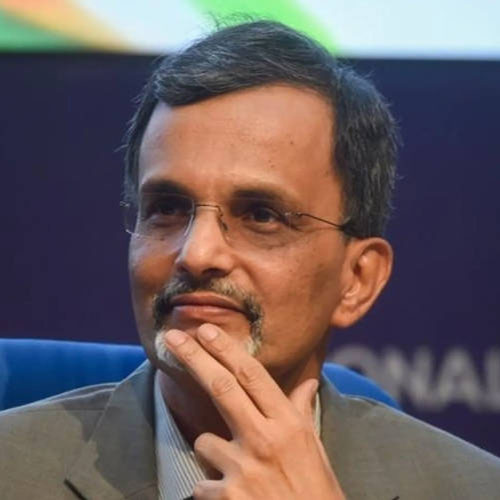
RBI’s rate increases were a sign that economic recovery was taking hold after data showed that the GDP grew 8.7 per cent in FY22
Venkatraman Anantha Nageswaran, chief economic advisor
Getting it wrong
The tragedy about the current economic situation, particularly the inflation trajectory, is that government economists got it wrong and expected retail inflation to ease to about 7 per cent in May. The RBI projected 2022-23 retail inflation at 5.7 per cent in April. It predicted a decline in inflation as the year progresses. It then projected inflation at 6.3 per cent in the first quarter, 5.8 per cent in the second quarter, and 5.4 per cent and 5.1 per cent in the third and fourth quarters respectively.
In May, however, when it surprised the markets with an off-cycle, repo rate increase of 40 basis, it revised the figure to 6.7 per cent. Since then, the Modi government too has woken up, slashing taxes on fuels for the second time in six months, capping wheat exports, and tweaking a raft of duties to control food and input costs.
Till recently, the finance ministry believed that the risk of sustained high inflation was low because aggregate demand was recovering slowly. In fact, further hikes in policy rates are now being seen as a mere normalisation of policy, not as tightening. On 31 May, Venkatraman Anantha Nageswaran, the chief economic advisor, said RBI’s rate increases were a sign that economic recovery was taking hold after data showed that the GDP grew 8.7 per cent in FY22.
Misplaced bravado
But the bravado could be misplaced as a lot of unforeseen developments have taken place during the last six months. In January the Economic Survey had projected the economy would grow between 8 and 8.5 per cent in 2022-23. The government, however, scaled down its projection to 7.5 per cent in the budget. In April, the RBI cut its forecast to 7.2 per cent from 7.8 per cent.
The RBI’s forecast is almost in line with that of S&P Global Ratings at 7.3 per cent. S&P has trimmed India’s growth projection for the current fiscal to 7.3 per cent from 7.8 per cent earlier due to rising inflation and the longer-than-expected Russia-Ukraine conflict. In its Global Macro Update to Growth Forecasts, S&P said inflation remaining high for long periods is a worry, which requires central banks to raise rates more than what is currently priced in, risking a harder landing, including a larger hit to output and employment. S&P pegged CPI or retail inflation in the current fiscal at 6.9 per cent.
On top of that, economic growth slowed in the January-March period of 2021-22 to 4.1 per cent, a four-quarter low, reflecting in part the impact of the Omicron wave on the manufacturing sector and contact-intensive services. For the full financial year of 2021-22, the National Statistical Office has now marginally pruned its year-on-year gross domestic product (GDP) growth forecast to 8.7 per cent, down from the 8.9 per cent estimated in February. The economy had witnessed a 6.6 per cent contraction in 2020-21.
Domestic momentum
However, the Modi government believes that the domestic economic momentum seen in the massive government capital expenditure, rise in indirect tax collections and import of capital goods, offer comfort, so that the impact on the economy in the current year may turn out to be ‘tolerable’. The Budget allocated Rs7.5 lakh crore towards capital expenditure in 2022-23, which is 24 per cent more than the revised estimate of 2021-22.
Also offsetting the headwinds, the finance ministry is hoping, are flagship government projects including GatiShakti and Production Linked Incentive Schemes to drive investments. The calculation is that these moves will combine with supply chains strengthened by the structural reforms taken in the past few years to deliver reasonable post-recovery growth for the economy.
The growth path ahead will likely be a more inclusive one as the government has extended free foodgrain support for the poor by another six months. Besides, there is growing evidence of improving labour force participation and declining unemployment.
-
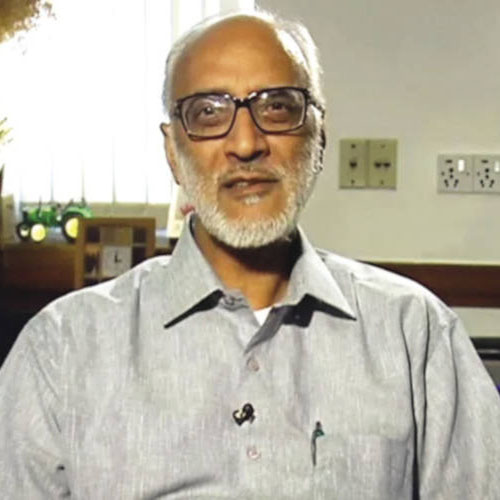
Focused policy action is needed on three fronts: fast tightening of loose monetary policy, prudent fiscal policy and rational trade policy
Ashok Gulati, Agricultural Economist
With India’s merchandise exports touching a record $418 billion in 2021-22, the finance ministry expects the export momentum to continue this fiscal with marginal downside risks emanating from the Ukraine conflict and related global spillovers. But it added that the import surge in March – due to a 20 per cent sequential increase in crude oil prices – ‘does not portend well for the economy in the year ahead.’
Suggestions galore
There are suggestions galore on how the situation needs to be tackled but even those who are making these suggestions feel they are barking up the wrong tree. Ashok Gulati, eminent agricultural economist, feels that unless bold steps are taken on at least three fronts, GDP growth and inflation are likely to remain in the range of 6.5 to 7.5 per cent in 2022-23.
Focused policy action is needed on three fronts: fast tightening of loose monetary policy, prudent fiscal policy and rational trade policy. However, on fiscal policy, his assessment is that it will remain loose, in the range of 6.5 and 7.5 per cent during the year. In fact, he does not see it going below 5 per cent by the end of 2023-24.
As for trade, he says that even if the government adopts a more mature trade policy to filter exports through a gradual process of minimum export prices and transparent export duties for short periods of time, rather than abrupt bans, it is doubtful that inflation can be tamed as it is a global phenomenon.
“Policymakers are preparing for a hard landing given the inflation priority... India has never faced recession except during the Covid period. Going by historical data, India doesn’t face recession but just slows down substantially... We will go through a sharp slowdown when it happens globally, which is something global central bankers are preparing for, and that might lead to some midcycle adjustment,” feels Madhavi Arora, Lead Economist at Emkay Global Financial Services.
The Finance Ministry review admits that the global economy, still in the process of reversing supply-side disruptions caused by the Covid-19 pandemic, would have been far more comfortably placed in the absence of the Russia-Ukraine conflict and the economic sanctions it has led to. If global inflation does not sufficiently decline despite aggressive monetary tightening sharply slowing growth, the review points at the persistence of supply-demand imbalances that only coordinated actions of world leaders can resolve. That’s where India, as the prospective president of the G20, will have to play a role. India will have to set a high bar if it is to be taken seriously.
-
India doesn’t face recession but just slows down substantially... We will go through a sharp slowdown when it happens globally, which is something global central bankers are preparing for, and that might lead to some midcycle adjustment
Rupee at all-time low
As capital outflows show no let-up and crude oil prices remain at elevated levels, the Indian rupee has hit a record low against the US dollar. It tumbled to a fresh lifetime intraday low of R77.93 against the dollar on 10 June before stabilising at Rs77.84. This followed the flight of capital on account of Foreign Portfolio Investors pulling out of the equity market. Another concern was the Indian basket of crude hitting $121 a barrel against the average price of $105 factored in by the RBI while drawing up its macroeconomic projections.
As if the recent surge in inflation was not enough, some experts now predict that the rupee might see a further decline, sliding to as low as R81 in the next five-six months. With the latest US inflation data coming in higher than expected, the worries will continue and markets might witness selling.
The RBI’s claim to stall a freefall will then be seriously tested. Last month, RBI governor Shaktikanta Das said: “As far as the worry around the rupee (is concerned), let me clarify one point: our stated position is to prevent excessive volatility, and we will continue to do that. We will obviously not allow a runaway kind of depreciation of the rupee at a rapid pace. The rupee will find its level, we have no specific target of the exchange rate in our mind. I am not saying anything new. This is the stated RBI stand.”
In May, the RBI used the stockpiled forex reserves to prevent the rupee from hitting the 77.5 level against the US dollar. But that’s an old story. The thing to watch out for now is whether the rupee will depreciate further from the current levels and what the RBI will do. “The resistance stands at the 78 level and it is unlikely that level will break in the near term,” says Ravi Singh, vice president & head of research, Share India.
Generally, inflationary pressures and the declining value of the rupee mean that everything we import is now more expensive than before. While a declining rupee increases the value of exports, it similarly also increases the cost of imports. So, while the RBI has started taking steps to fight inflation and control liquidity, the strengthening of the dollar will somewhat nullify the impact. Smaller, less organised players will be hit.
Since India has a deficit of over $100 billion in foreign trade – where imports are higher than exports – and it is heavily dependent on the import of crude oil, this creates a feedback loop wherein a declining rupee makes petrol and diesel more expensive, which then also increases the cost of everything else because goods need to be transported.
However, most large companies have buffers to withstand a further 10-15 per cent depreciation of the rupee. According to a report by Moody’s Investor Services, most of the companies it rates have projections to limit the effect of currency fluctuations. These include natural hedges in the form of revenue and cost denominated in or linked to the dollar, some dollar revenue, financial hedges, and a combination of these which help limit the adverse effects on cash flow and leverage even in the event of a more severe weakening of the rupee.
The RBI’s current target is to maintain inflation in the 4-6 per cent range. To do that, and also maintain the rupee’s value when international commodity prices are still high, will be a real tightrope walk.
